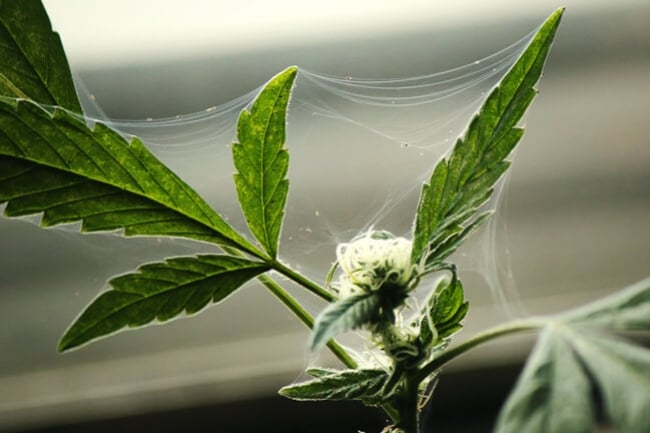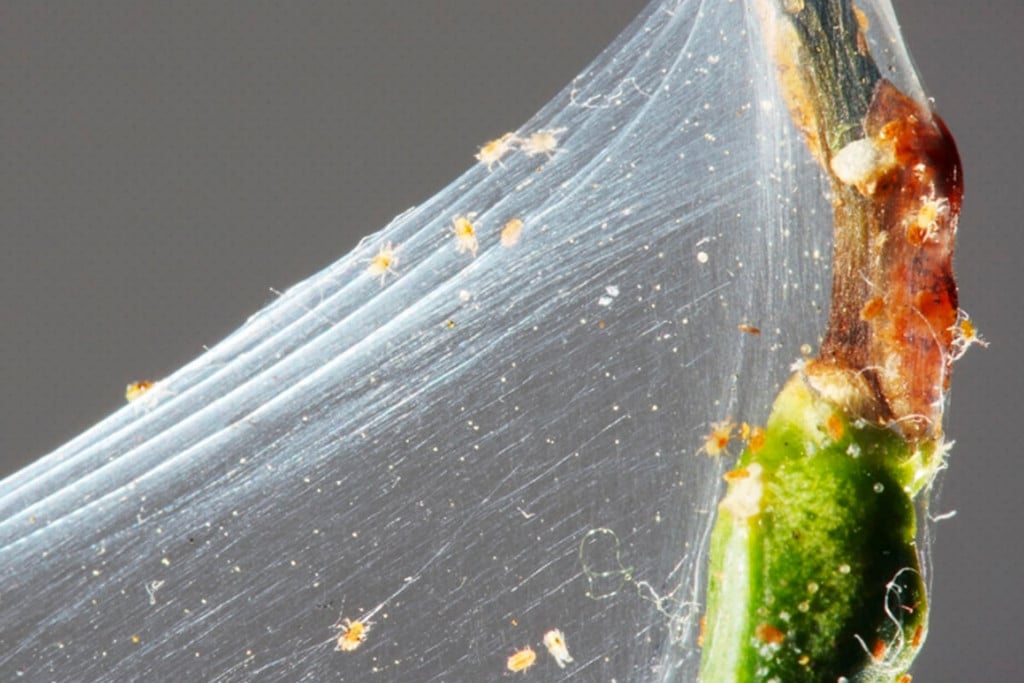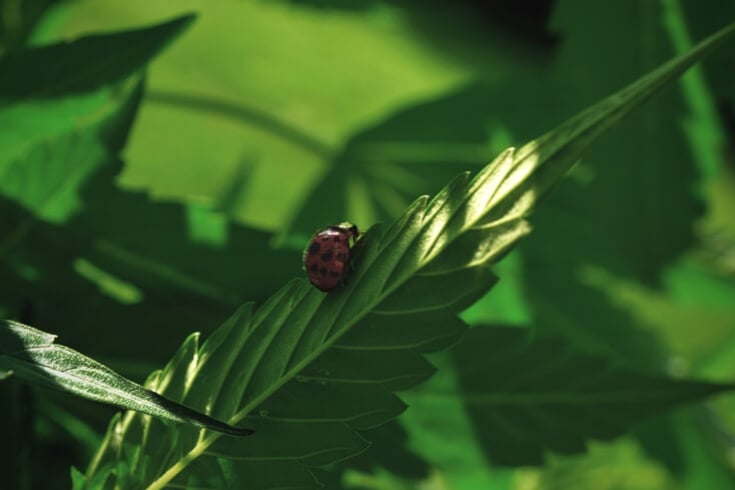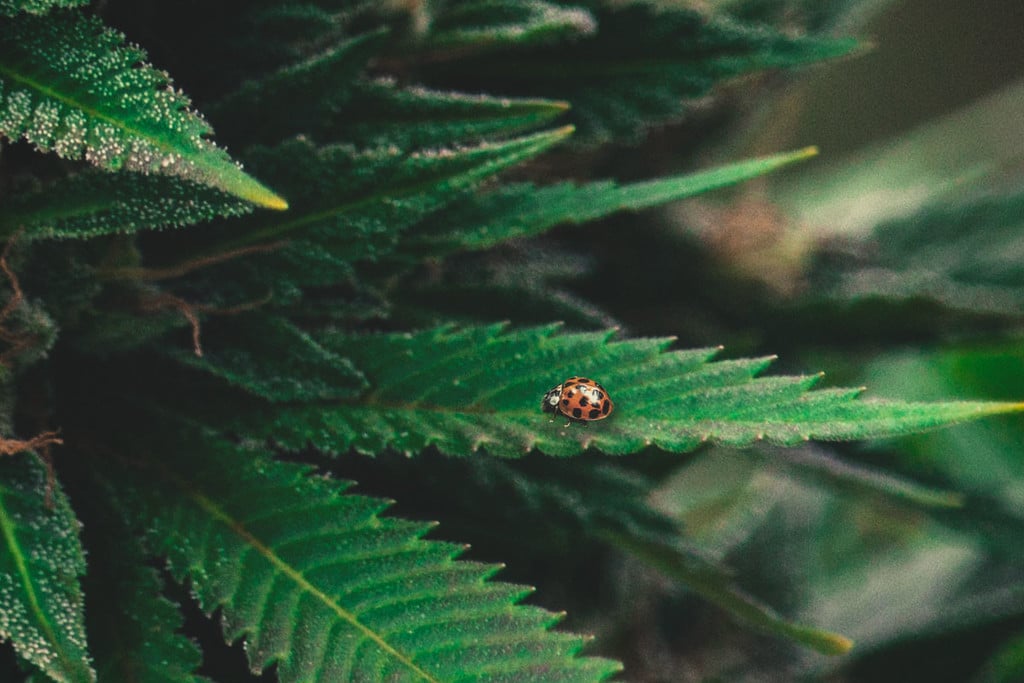.
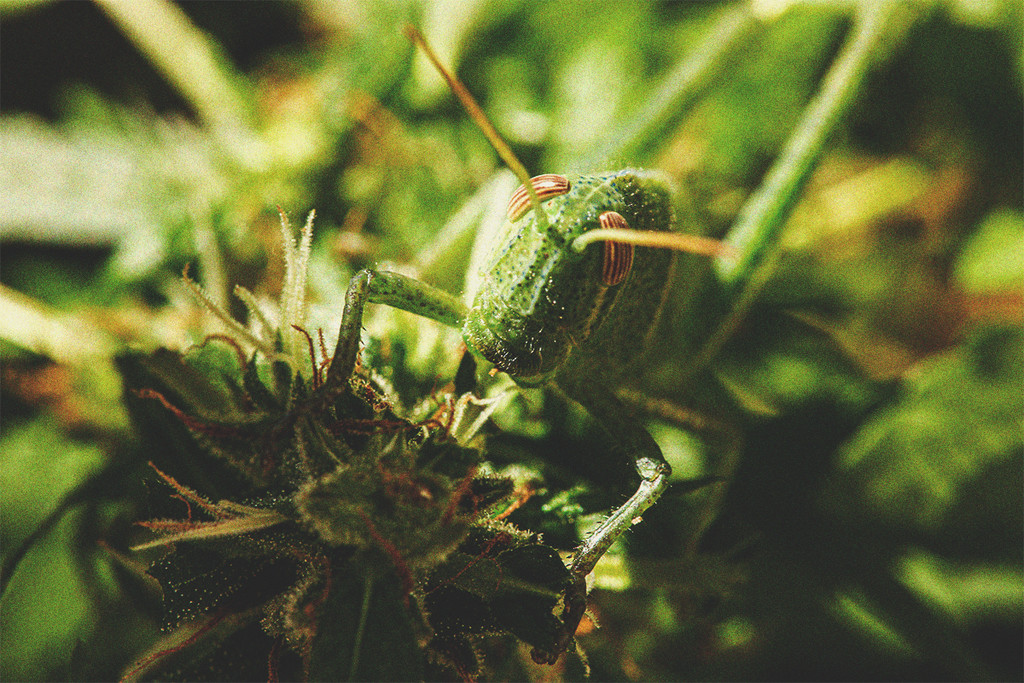
How to Keep Crickets Away From Cannabis Plants
While crickets may not seem harmful at first glance, when it comes to your precious cannabis plants, they certainly pose a threat. Keep reading to find out how you can deal with these little critters.
Contents:
Crickets will eat just about any vegetation, and that includes cannabis. While it's true that your beloved plants aren't their first food of choice, a cricket infestation can quickly lead to disaster. The key is spotting the signs of a looming cricket presence and knowing how to keep their numbers at bay.
What Are Crickets?
To beat your enemy, you first need to understand them. When dealing with crickets, the strategy is no different, as there are several different species, with some affecting plants in slightly different ways.
Generally speaking, crickets are roughly one inch (2–3cm) long, with large hind legs, two long antennae on the top of their head, and wings on their back. Colours vary from black to brownish-yellow, and because they are primarily nocturnal, they’ll start appearing in the late evening. Fortunately, the noise makes it easy to notice a cricket infestation! When crickets rub their wings together, they give off a loud and persistent chirp.
Two of the most common cricket species are the house cricket and the mole cricket. The former acts as you would expect a normal cricket to, living above ground while chewing on fresh leaves and flowers. The latter, however, resides underground in small burrows and prefers to eat a plant's roots.
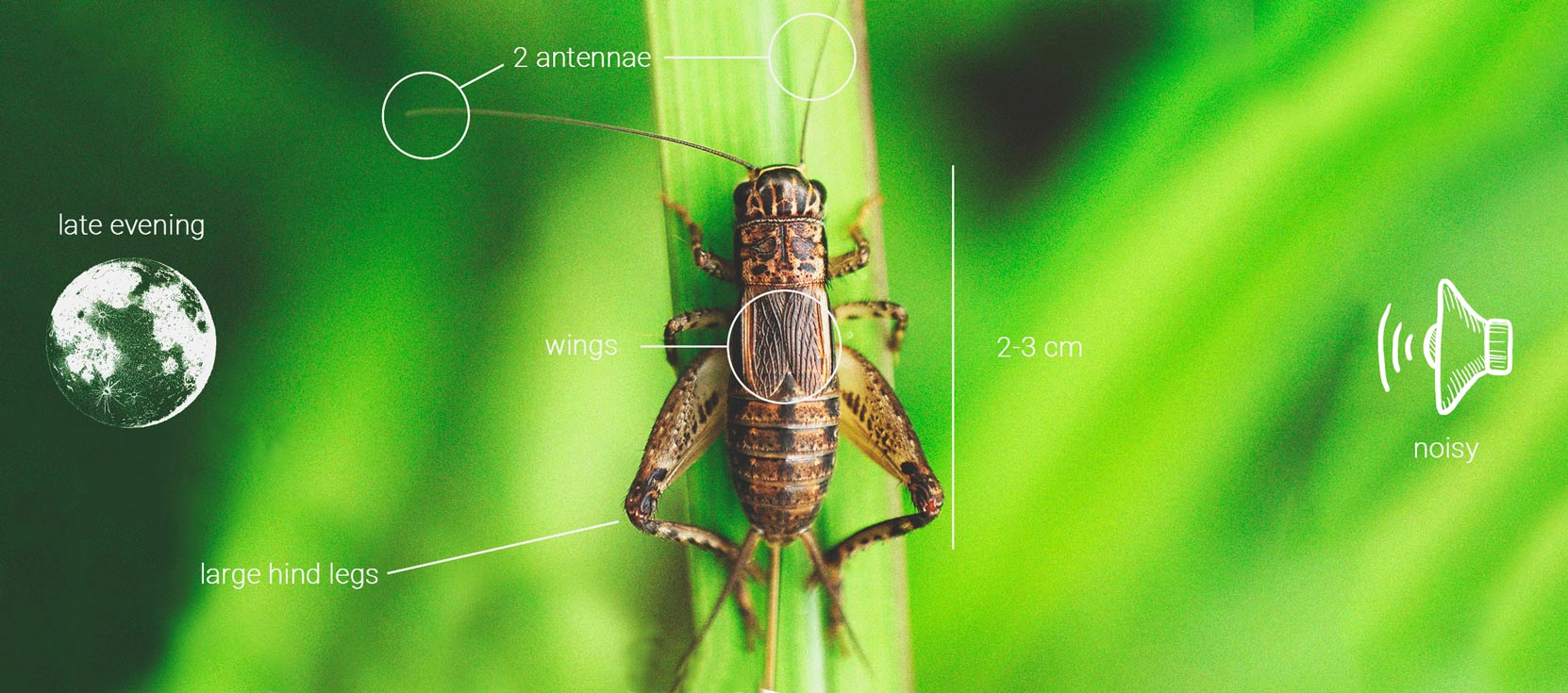
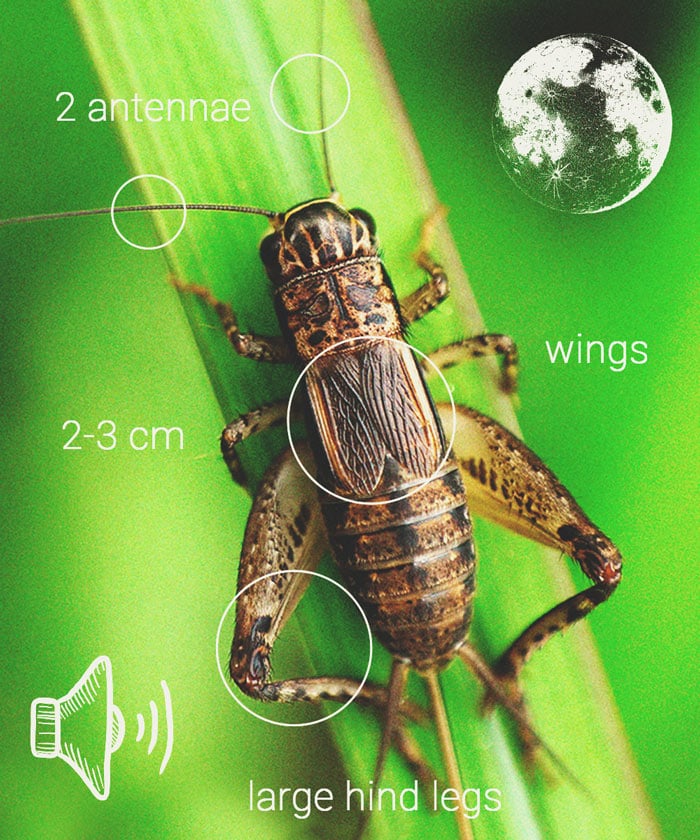
The Difference Between Crickets, Grasshoppers, and Locusts
Crickets belong to the order Orthoptera, which also comprises locusts and grasshoppers. However, despite being distant cousins, there are a few stark differences between the three insects.
Crickets are the smallest of the bunch and will eat plant material, fruit, seeds, and dead insects. Grasshoppers are strictly herbivores and are usually 1–3 inches long (2–8cm). Locusts are a subspecies of grasshopper and alternate between a docile grazing pattern and an intense feeding frenzy that can decimate crops. Locusts also tend to have much more vibrant or distinct colouring than the other two insects.
The Risk of Crickets to Cannabis
A handful of crickets isn't much to be worried about when it comes to your precious cannabis plants. As we've previously stated, they are omnivores, so unless there are no other food sources, they won't focus exclusively on cannabis.
However, once numbers start to build, so too does the risk that they'll begin munching on leaves, flowers, and stems. Crickets are especially fond of seedlings, and it only takes a few of the insects to destroy an entire crop. They also like to strike at night, so the best time to check for crickets is at sunset.
Signs of Cricket Damage on Cannabis Plants
Thankfully, the telltale signs of crickets damaging your cannabis plants are pretty obvious. They include the following:
- Small holes on leaves
- Brown spotting
- Tunnels/visible holes appearing around the plant's base (mole crickets)
- Damaged or missing roots
- Audible chirping
- Increased pre sence of cricket predators (birds, raccoons, skunks)
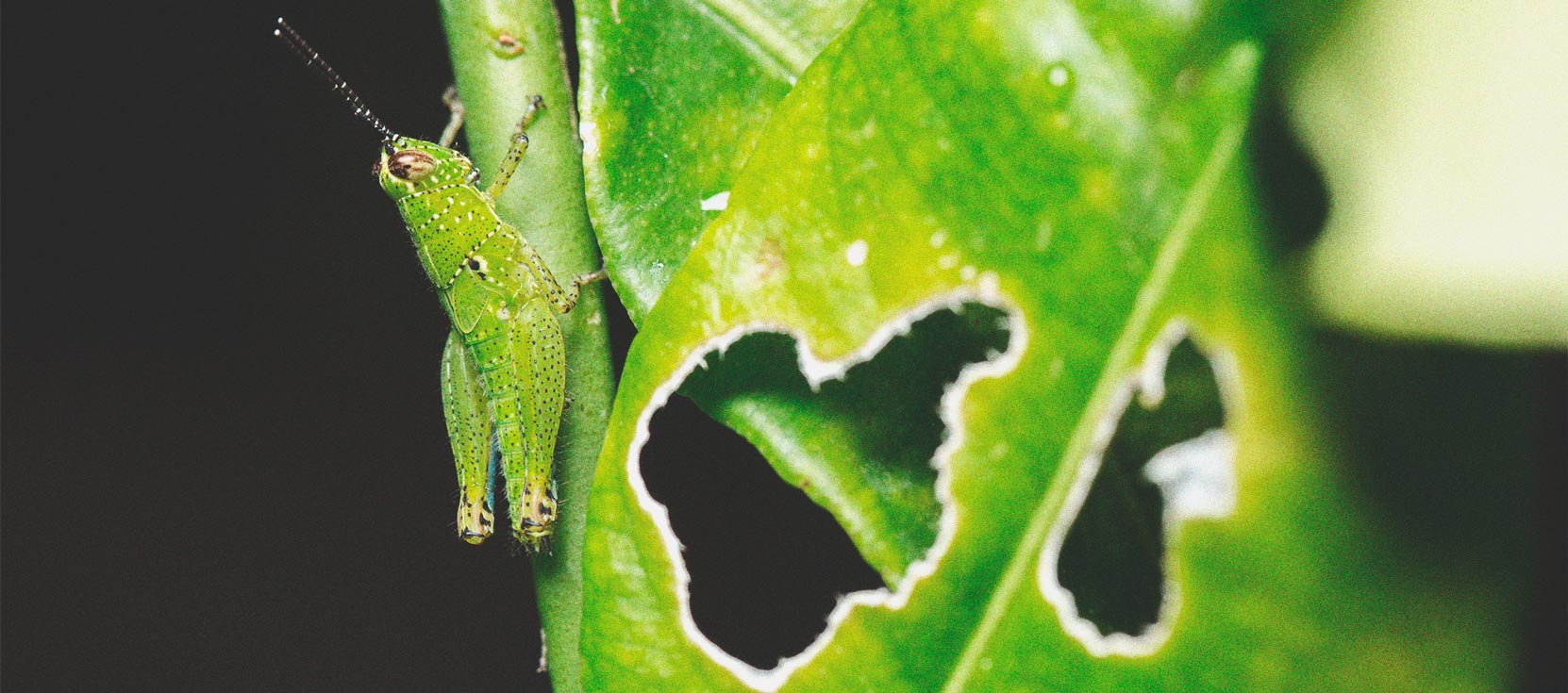
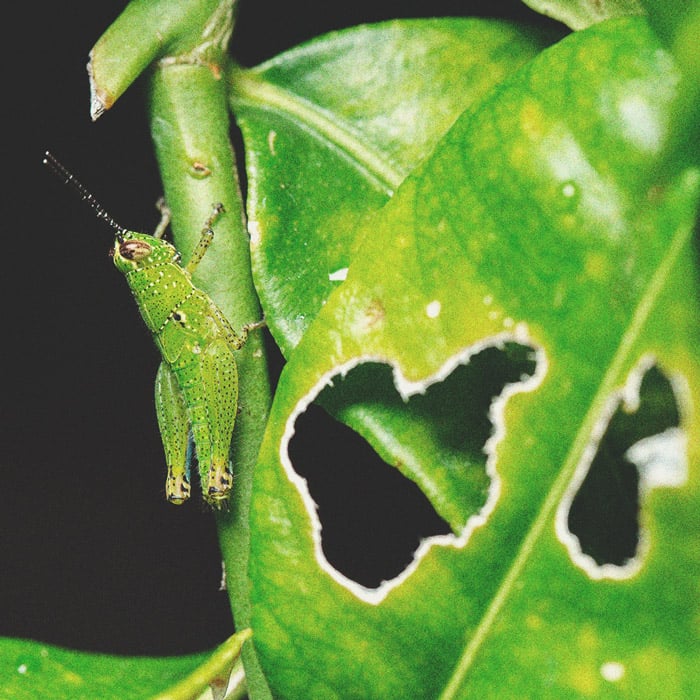
How to Deal With Crickets on Cannabis Plants
If you've woken up only to realise that an infestation of crickets has started destroying your cannabis plants, the good news is you have a few options for dealing with them.
Cricket Traps
You can quickly reduce cricket numbers with a few carefully placed traps (although traps alone won't solve the issue entirely). Most shop-bought traps will kill the pesky critters, but you can catch and release them if you'd like a more humane approach. Just remember to release them somewhere far away from your crop.
Another DIY option for trapping crickets is molasses. The sweet smell of molasses attracts crickets, luring them to a slow, sticky death. To create your own traps, simply fill an open-top container with one cup of molasses and roughly two litres of water. Position the trap close to plants or near the tunnels and burrows of mole crickets. You'll need to check and remove any dead crickets daily, as you'll be surprised how quickly the trap fills up.
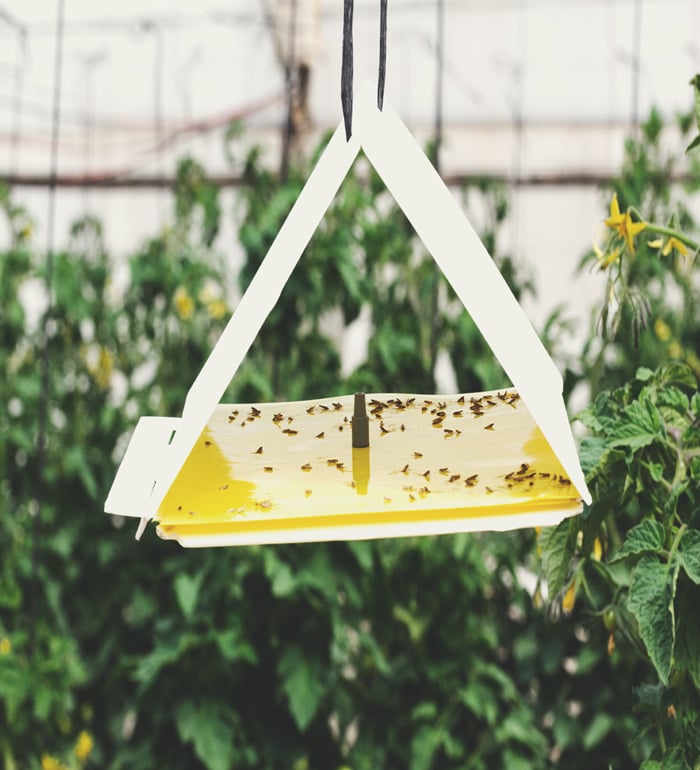
Insecticides and Pesticides
Encouragingly, the options for cricket insecticides and pesticides are plentiful. First up is spinosad—a natural substance that is safe to use on cannabis plants and won't harm pets. It's not quite as potent as some other options, so you'll need to give your plants a liberal covering; still, spinosad is an excellent insecticide to start with.
Next on the list is a staple of cannabis pest control—neem oil. You'll need to spray plants directly (avoiding buds), but the unpleasant aroma of neem oil should deter crickets from making a destructive return. Just don't forget to lightly soak the ground around your cannabis plants (to deal with any pesky mole crickets), repeating daily or until you're happy the infestation is dealt with.
Finally, there are also insecticidal soaps and the organic insecticide Essentria IC3. They are generally safe to use on cannabis plants, but we recommend following the manufacturer's guidelines to get the best results.
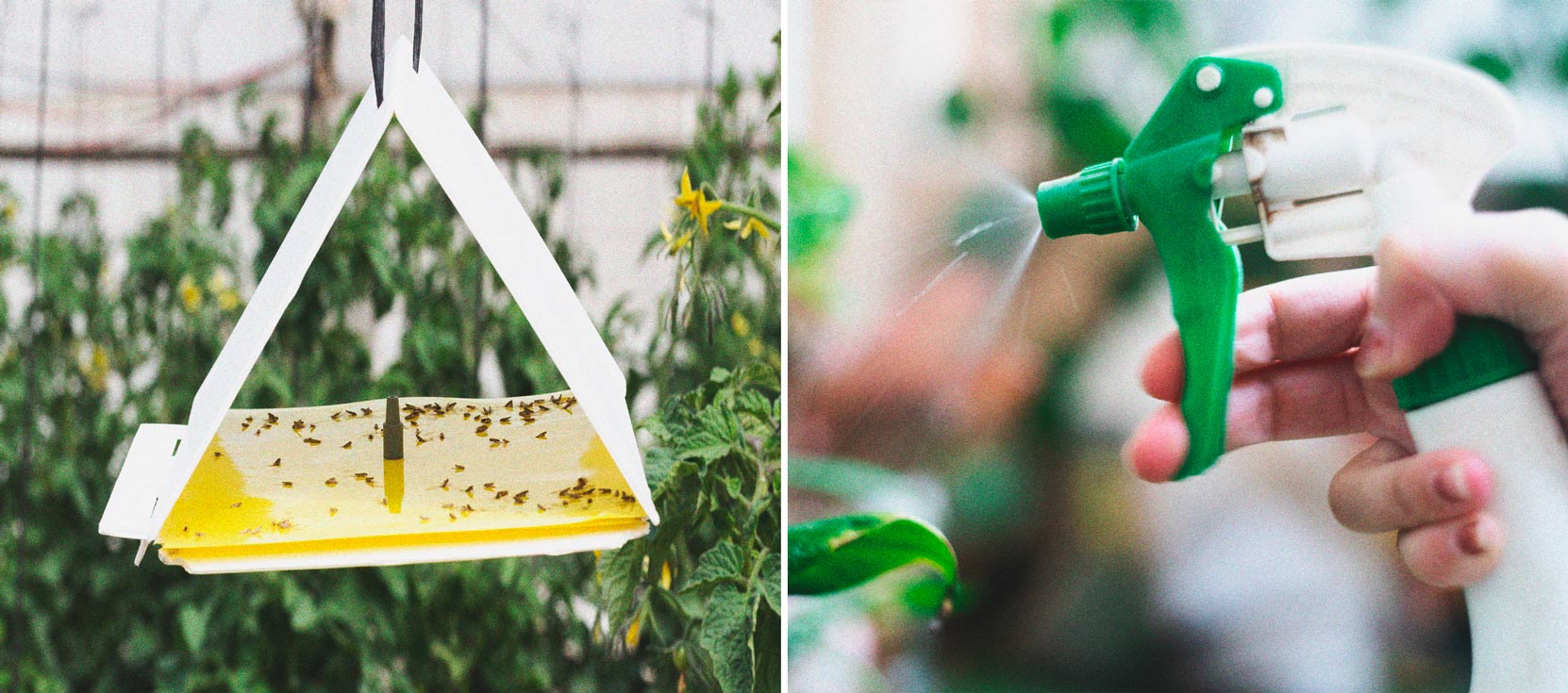
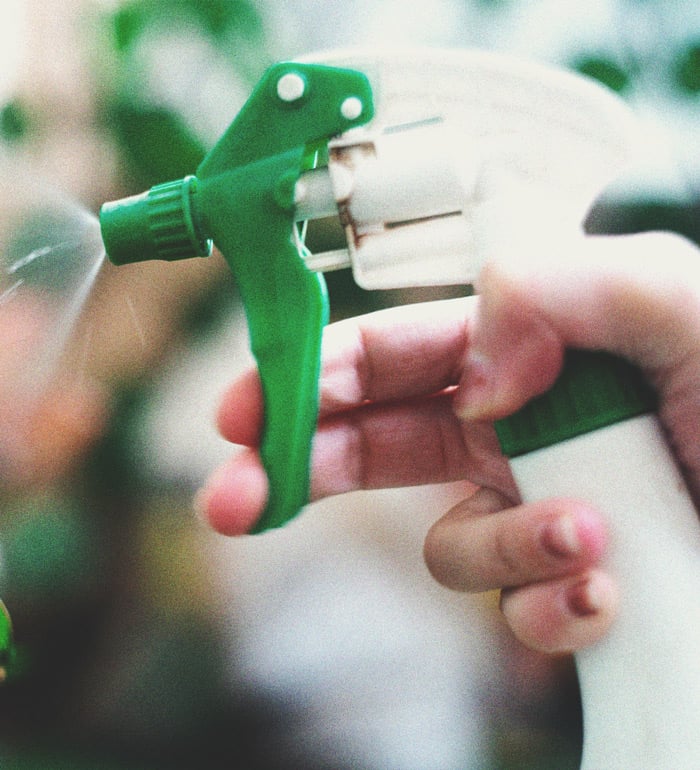
Natural Predators
Frogs, lizards, salamanders, beetles, parasitoid wasps, and even chickens can all be used to cull cricket numbers. In fact, a few chickens will make short work of the insect population in a small cannabis garden, so they're a great choice if you have multiple pest issues.
A low-investment option is hanging a few bird feeders around your cannabis garden. Most birds will happily chomp on small insects, helping to keep cricket numbers under control. Of course, there are pros and cons for each type of predator, so it's crucial to balance these against your circumstances to see which is the best fit for your cannabis garden.
How to Prevent Crickets on Cannabis Plants
It usually takes crickets a while to reach numbers that would spell disaster for your cannabis crop. Because of this, prevention is one of the best ways to stop the pesky insects from ever becoming an issue.
Floating Row Covers
Cheap, simple, and effective, floating row covers provide a cricket-proof barrier for your cannabis plants. It can be a little inconvenient positioning them above plants, especially if you don't have a frame to drape them from. That said, you can't beat the simplicity of row covers. If you're only cultivating a handful of small cannabis plants, they are invaluable at keeping crickets (and other insects) at bay.
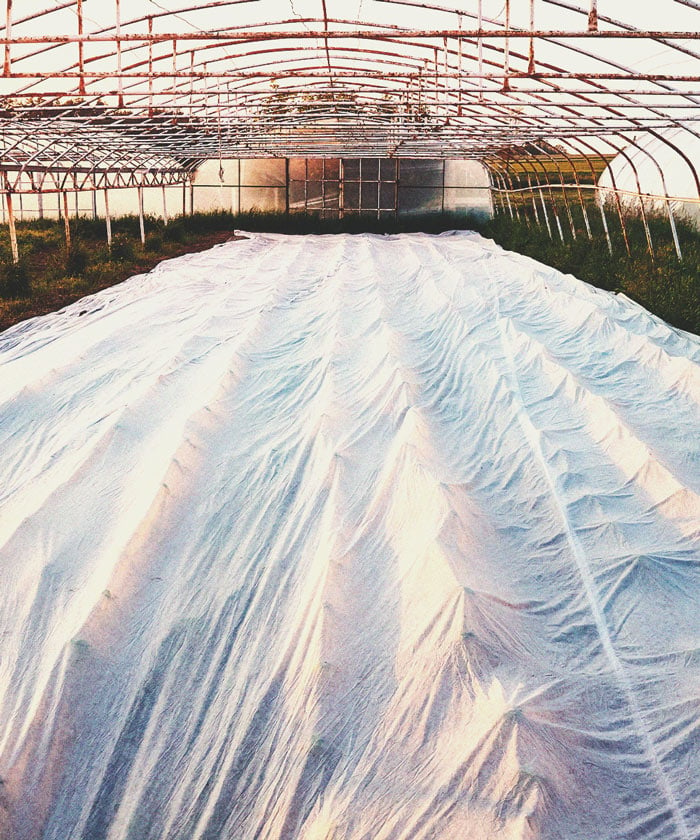
Good Housekeeping
Keeping your cannabis garden tidy and debris-free is crucial to preventing a cricket onslaught. Because crickets are omnivores, they're attracted to areas with diverse food sources. And while cannabis isn't their first choice, it'll be hard for them not to indulge once numbers start to build.
The best approach is to limit vegetation, keep any nearby grass short, and remove debris such as dead leaves and cuttings. Also, be sure to keep any compost or debris piles far from your cannabis crop. A cricket's large hind legs can propel them over a metre, meaning it's only a short trip to your precious flowers if the compost pile is next door.
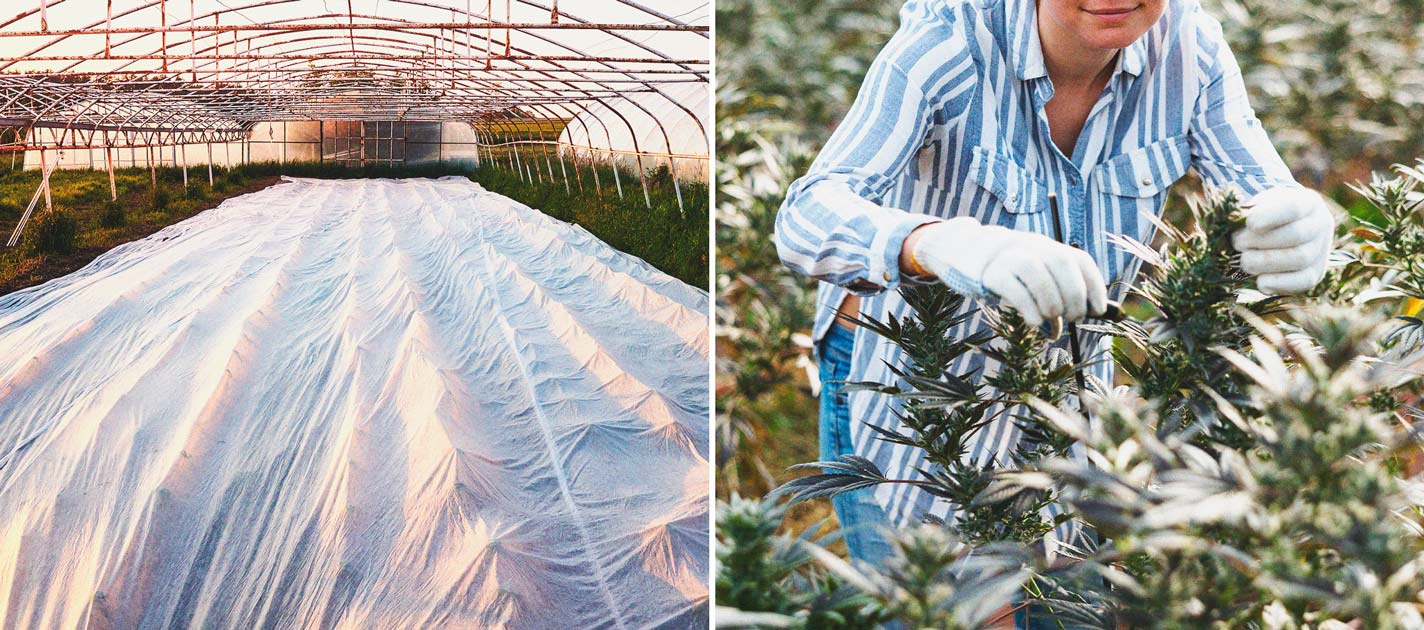
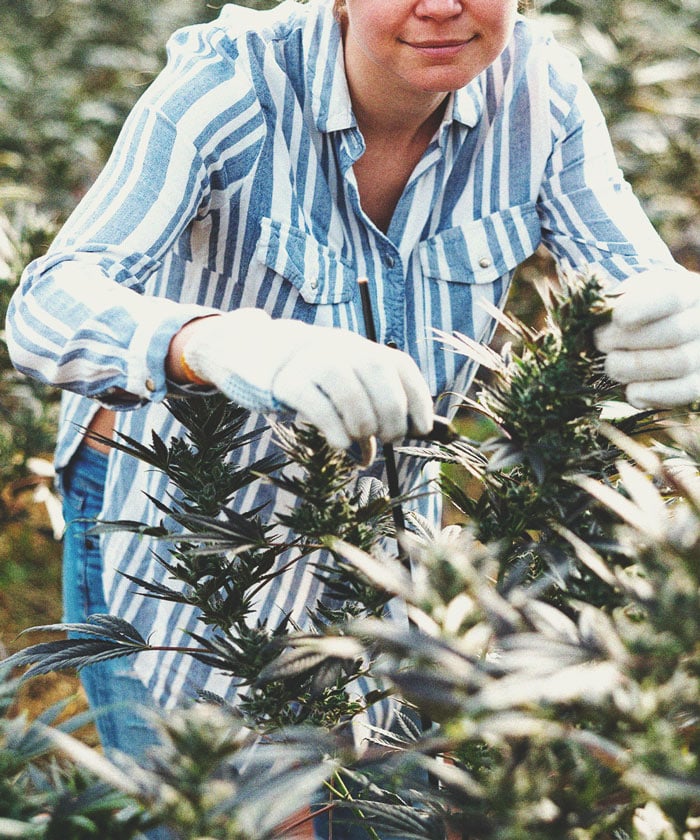
Careful Observation
Being able to spot potential issues is a skill all cannabis growers need. And, like all skills, you must practise before becoming proficient. Because it takes a while for cricket numbers to build, observation is crucial to keeping their numbers under control. You can easily remove a handful of curious crickets by hand, but an entire army is too much for one grower.
The nocturnal nature of crickets means the best time to check on your plants is around sunset, when they start to become active. Of course, if you don't spot any at first, hang around for a few minutes and keep your ears open. If any crickets are lurking around your cannabis plants, you'll hear them chirping away.
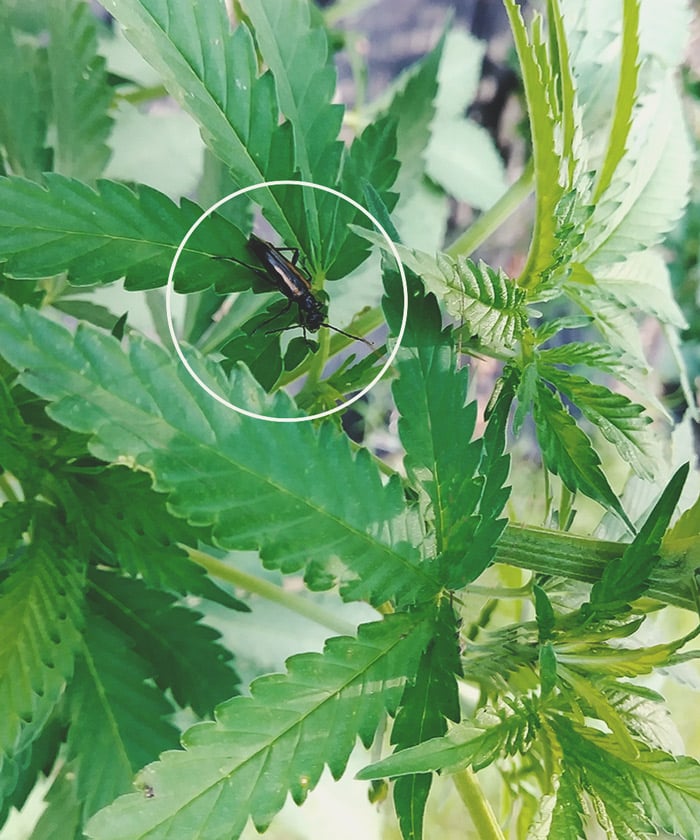
Companion Planting
If you're a fan of legumes (broad beans, peas, etc.) and potent herbs, we've got good news—crickets aren't! A few carefully placed companion plants can be a fantastic deterrent for crickets (and several other pests), so it's definitely worth considering as a preventative measure.
Legumes are nitrogen-rich, which irritates crickets, and they find the strong scent of herbs off-putting. You can also try alfalfa, but try to keep them in separate garden beds, as they root very fast and can cause issues with overcrowding.
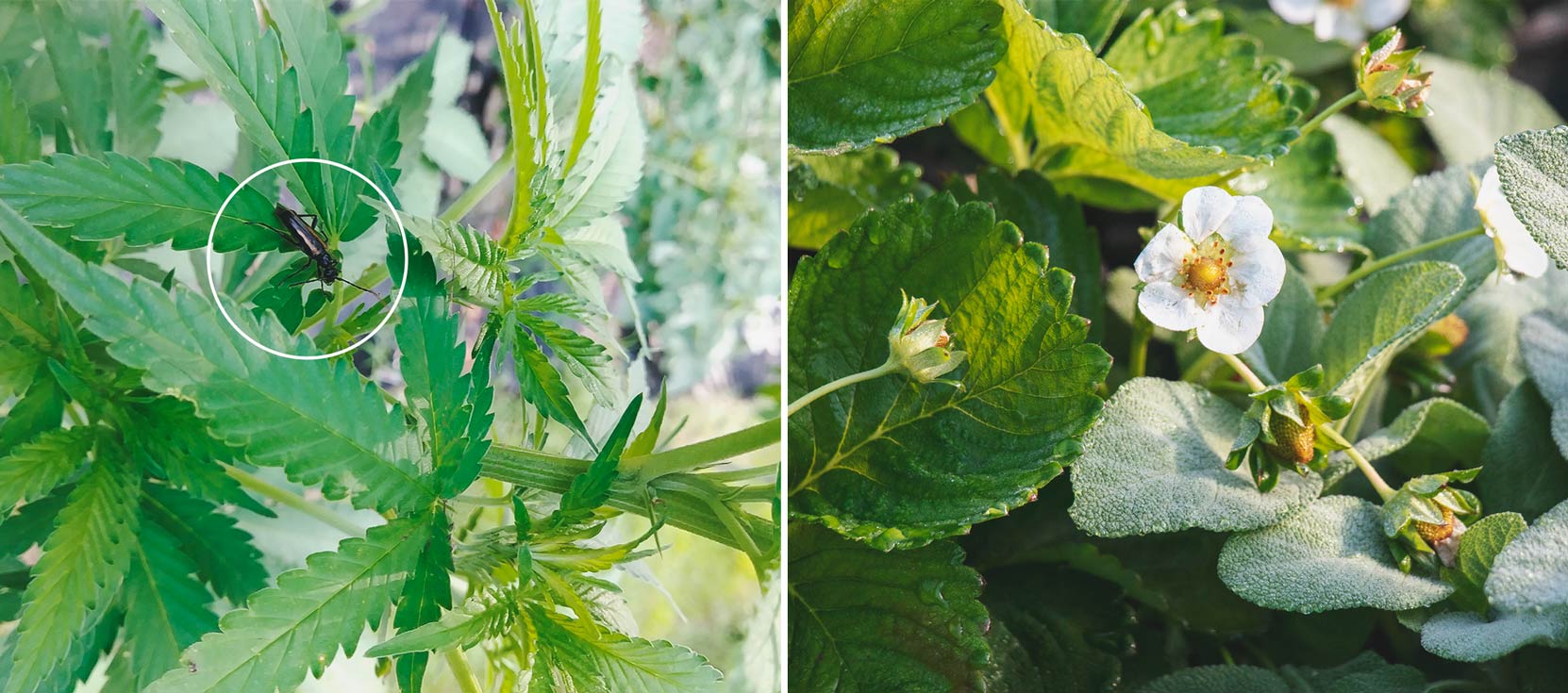
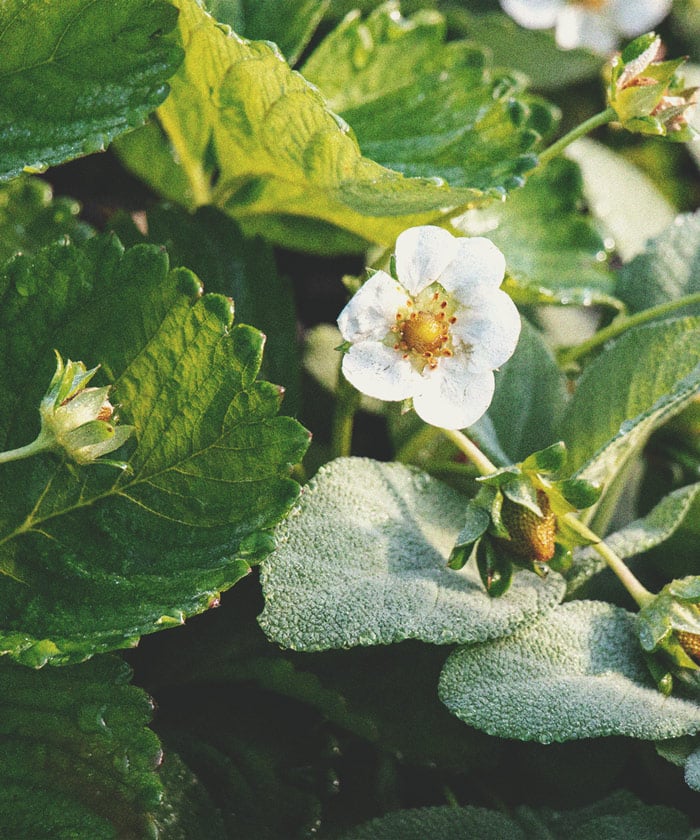
Crickets and Cannabis: Prevention Is the Best Defence
When dealing with crickets, prevention methods are far more manageable and less labour-intensive than trying to battle an infestation. Fortunately, a hoard of crickets rarely attacks overnight, so you'll have several days to take action.
Just remember that crickets can be helpful for your garden's ecosystem, so you don't need to focus on removing every trace of their existence. You do, however, want to prevent them from getting too close to cannabis plants, especially if they're still young, as nothing is more appealing to a cricket than some young, tasty seedlings.















































